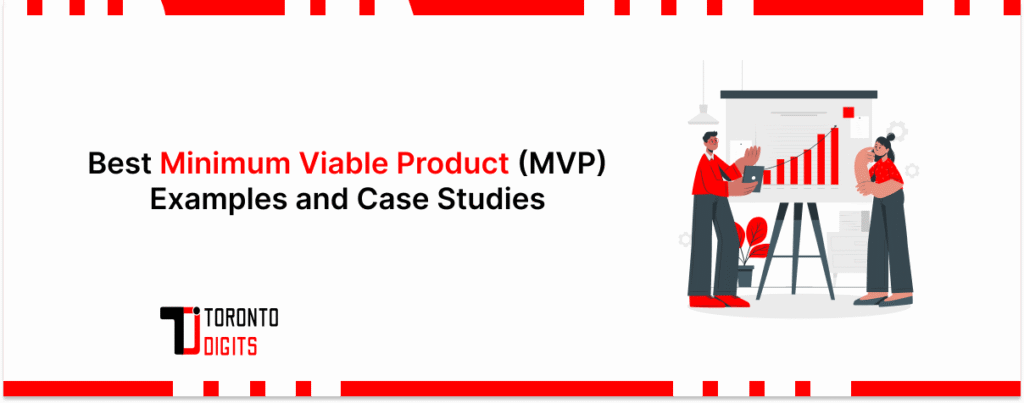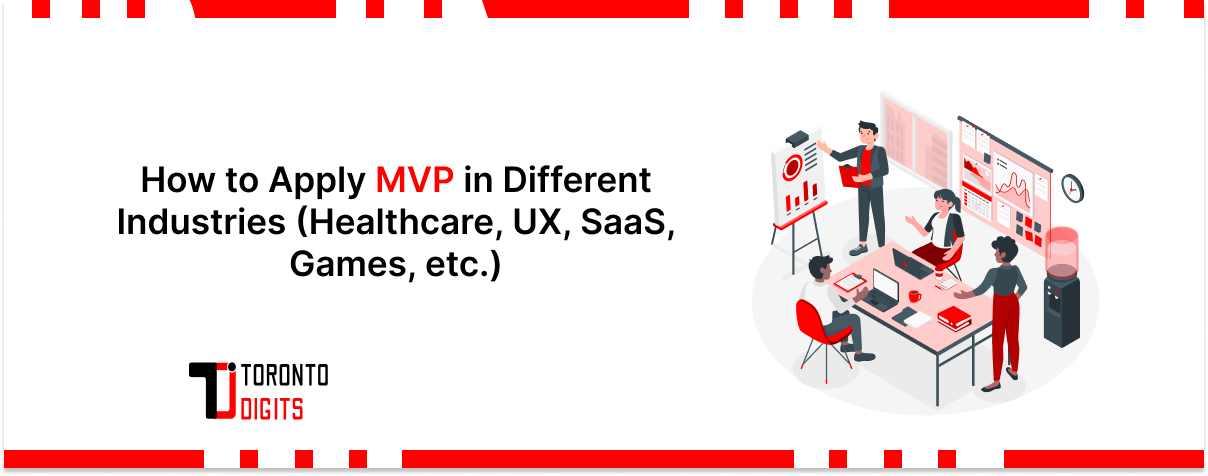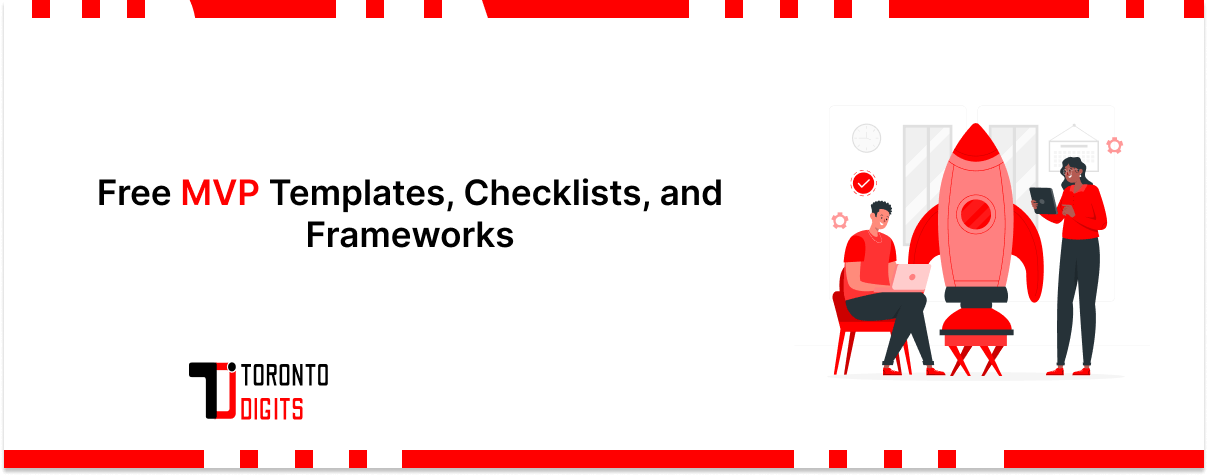Building a Minimum Viable Product (MVP) is now a crucial step in any successful product strategy. In this guide, we’ll look at 11 real-world businesses that nailed their MVPs — and how you can learn from their journeys.
What is an MVP?
When launching a startup, the goal is to connect with customers quickly and efficiently. That’s where an MVP comes in. It’s a simple version of your product designed to test your idea, gather real user feedback, and guide future improvements — all without spending too much time or money.
In fact, the lean startup approach defines an MVP as the earliest version of a product that delivers the most customer insights with the least effort and cost. Sounds ambitious? These real-life examples will show you just how possible — and powerful — it really is.
What Makes a Great MVP?
A strong MVP lets you test your product idea with far less risk — both financially and in terms of time — compared to launching a full-scale version right away. It’s your chance to deeply understand what your audience truly needs, plan how to introduce your product to the market, and identify the most essential features to focus on first.
Some of the world’s most successful digital products — like Facebook, Instagram, Spotify, Uber, and Dropbox — all started as simple MVPs. Remember, building a polished, feature-rich product can take years of effort, time, and money. An MVP helps you validate your idea early before committing to that level of investment.
How to Build a Good MVP
Here’s the hard truth: most startups fail. And one of the biggest reasons is that they create products based on assumptions — building something they think people want, only to discover no one actually does.
An MVP flips that script. By launching a basic version and improving it step by step based on real user feedback, you dramatically increase your chances of finding a product-market fit. Instead of wasting time and money on features people might never use, you learn directly from your audience what works and what doesn’t.
In simple terms, an MVP acts as your safety net. It helps you avoid costly mistakes, focus on building what people truly need, and turn customer insights into a product they’ll actually love.
Examples of Minimum Viable Products
Here are a few successful MVP examples that paved the way for lucrative products by focusing on customer needs and learning with each iteration.
Amazon
Amazon is one of the best real-world examples of a successful MVP. Back in the early 1990s, Jeff Bezos launched Amazon not as the massive online marketplace we know today, but as a simple online bookstore.
Bezos started by listing about 20 different product ideas that could sell well on the internet. After narrowing them down to five — including books, software, computers, CDs, and videos — he chose books because they were in high demand, easy to source, and had a huge market potential.

That small, focused MVP was the foundation of what Amazon would become. Today, it’s the world’s largest eCommerce platform, offering millions of products across countless categories — all starting from a simple idea to sell books online.
Uber

Uber is another classic example of how a simple MVP can turn into a global success story. Founders Garrett Camp and Travis Kalanick started with a straightforward idea: connect people who need a ride with drivers through their smartphones.
Instead of building a complex app right away, they launched a basic version called UberCab. It worked only on iPhones or through SMS and was available exclusively in San Francisco and New York — and even then, only by invitation. When someone requested a ride, a real person on the other end manually coordinated the driver.
That simple MVP was enough to validate the concept. Once they saw how much people loved the convenience, they scaled the product — and today, Uber is a global leader in ride-hailing, available in hundreds of cities worldwide.
Buffer
Buffer, a popular tool for scheduling social media posts, started with an MVP that was incredibly simple — just a couple of landing pages.

The first page invited users to enter their email if they were interested in the product and wanted to learn about pricing. The second page presented them with options: try a free version or choose from two paid plans. To the team’s surprise, most people showed interest in the paid options, proving that the idea had real potential.
Founder Joel Gascoigne shared that the goal of this basic MVP was simply to see if people cared about the product at all. He tweeted the landing page link, collected emails, and gathered valuable feedback from early users. Once he saw that people were genuinely interested, Buffer continued to grow — eventually becoming one of the most trusted platforms for managing and scheduling social media content across multiple networks.
Spotify

The early version of Spotify (Source: Net Solution)
Back in 2006, paying to stream music seemed like a crazy idea — after all, people could easily download songs for free from sites like Napster and LimeWire. But founders Daniel Ek and Martin Lorentzon had a bold vision: build a free music streaming service supported by ads.
Before going all in, they needed to test if the concept would work. Many music startups had already failed, and the few that survived — like Pandora — used a different model where users couldn’t pick specific songs.
So, Spotify started with a simple MVP: a desktop app focused on just one thing — streaming music on demand. Once they saw that users loved the experience, they introduced a paid, ad-free subscription and continued improving the platform.
That small, focused beginning paid off. Today, Spotify is one of the world’s leading music streaming services, valued at over $18 billion and used by millions of people around the globe.
Airbnb

In 2008, Brian Chesky and Joe Gebbia were struggling to pay rent for their San Francisco apartment when they came up with a bold — and at the time, seemingly ridiculous — idea: what if people could rent out spare rooms or even just a couch to travelers?
The concept sounded so far-fetched that one investor told them, “I hope that’s not the only thing you’re working on.” Another even walked out of a meeting where Chesky offered 10% of the company for $100,000. Fast forward to today, and Airbnb is worth over $100 billion.
To test their idea, the founders launched a very simple MVP — a basic website with photos of available rooms in San Francisco. During a local conference, attendees started booking those spaces, proving there was real demand.
What began as “Air Bed and Breakfast” quickly evolved into Airbnb, and early users loved the concept. Media coverage followed, more hosts and guests joined, and the team continued refining the platform to solve key user problems — turning a crazy idea into one of the most successful startups in the world.

Facebook’s journey began with a very simple MVP — a basic website created just for Harvard students. Mark Zuckerberg and his roommates spotted a need within their own campus community and built the platform in just a few days to connect classmates online.
Once it gained popularity, they expanded carefully — adding one university at a time instead of opening it to everyone all at once. This slow, controlled growth was crucial back then, especially since sudden traffic surges had already caused platforms like Friendster to crash.
That thoughtful, small-scale start laid the foundation for what would eventually become one of the most influential social networks in the world.
Dropbox
Dropbox’s MVP wasn’t even a product — it was a simple explainer video. At the time, cloud storage was still a new concept, especially for everyday users and small businesses, even though larger companies were already using off-site storage solutions.

Instead of building a full product right away, founder Drew Houston created a short, four-minute video where he casually explained how Dropbox worked and showed just how simple it was to use.
This straightforward approach proved that an MVP doesn’t have to be fancy or expensive. If you can clearly communicate the value of your idea — even with something as simple as a demo video — you can validate your concept and gauge real interest before investing heavily in development.
Groupon

Groupon’s business model was ambitious from the start: a deal would only activate if enough people signed up, which encouraged users to share offers with friends and spread the word.
While the long-term vision was to build a fully automated platform, the founders started much smaller with a concierge MVP. They built a simple WordPress site and manually handled deals and emails behind the scenes. This low-tech approach allowed them to test the idea without heavy investment.
As the concept gained traction, they gradually upgraded to a more advanced MVP with automated systems and multiple technologies. This step-by-step approach let them validate their idea, understand user behavior, and collect valuable feedback — all of which helped shape Groupon into a scalable, successful product.
Zappos

Today, online shopping feels like second nature — but back in 1999, Nick Swinmurn wasn’t so sure people would be willing to buy shoes on the internet. To test his idea, he built a clever “Wizard of Oz” MVP — a product that looks automated on the outside but is manually run behind the scenes.
Swinmurn visited local shoe stores around San Francisco, took photos of their products, and uploaded them to a simple website. When someone placed an order, he personally bought the shoes from the store and shipped them to the customer.
This hands-on approach proved that people were ready to shop for shoes online. Once the concept was validated, Zappos launched a full-scale eCommerce platform, eventually generating over $1 billion in sales — and catching Amazon’s attention, which acquired the company in 2009.
AngelList

AngelList started with a simple mission: make it easier for startups to raise money. Its MVP focused only on the essentials — letting founders register, search for investors, and connect with them directly.
Once this basic version proved valuable and gained traction among entrepreneurs, the team began expanding the platform with new features. Today, AngelList offers much more than fundraising support. It now includes a recruitment platform to help startups hire talent and even a secondary market where investors can buy and sell shares in private companies.
What began as a straightforward solution to connect startups and investors has grown into a powerful ecosystem for building, funding, and scaling businesses.
Foursquare

Before Facebook and Instagram introduced check-ins, Foursquare was the go-to app for sharing where you were. Its original vision was ambitious — to build a digital “map of the world” — but it all started with a very simple, single-feature MVP: letting users check in at different locations.
Once they confirmed that people enjoyed using check-ins, Foursquare added fun, gamified features like badges and “mayor” titles for users with the most visits to a spot. This playful approach quickly made the app a social media hit.
While the buzz eventually faded, that early MVP laid the foundation for what Foursquare is today — a powerful B2B location technology provider trusted by companies like Uber, Apple, Coca-Cola, Spotify, Samsung, and Nextdoor to power their location-based services.
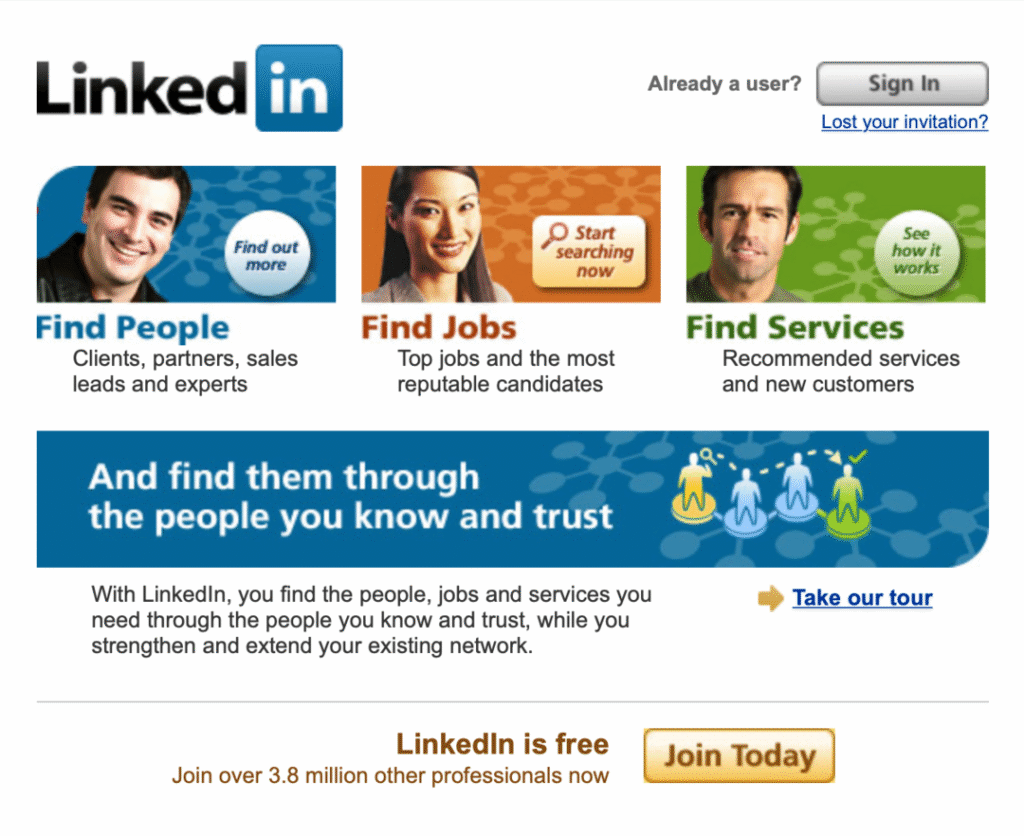
LinkedIn launched its MVP in May 2003 with just a couple of basic features: user profiles and a simple search function. In the early days, you could only connect with someone if you knew their email address — a feature that still exists today. The site’s design was far from perfect, but it was enough to test whether professionals were interested in an online networking platform.
Once they validated the idea, the team quickly started improving and expanding the platform. They added new features like uploading your address book, sending bulk invitations, and endorsing colleagues. These updates helped LinkedIn grow rapidly, and today it’s the world’s leading professional networking platform, with over 750 million users across 200+ countries.
MVP Takeaway: The goal of an MVP is to launch quickly, test your assumptions, and learn from real users — not to create a perfect product right away. LinkedIn’s early success shows that even a simple, imperfect version can lay the groundwork for a global business if you keep iterating and improving.
Duolingo
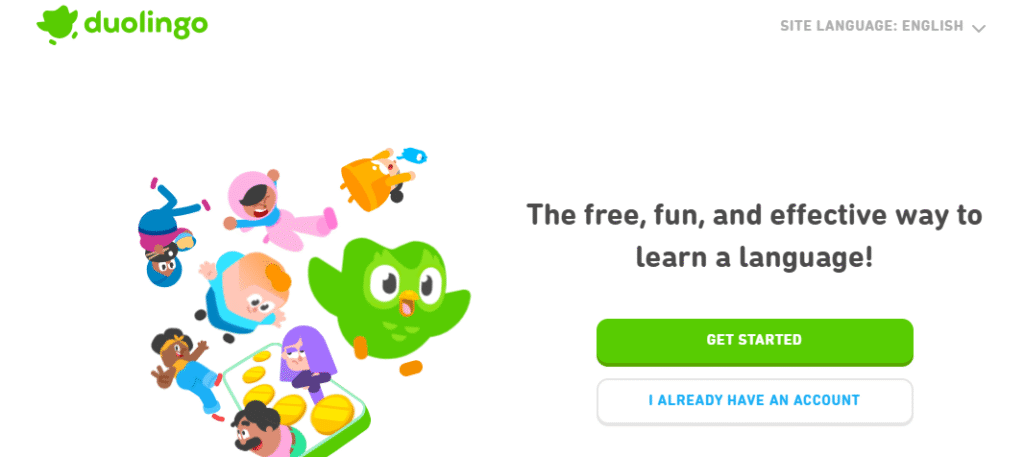
Duolingo started as a simple MVP with one clear mission: to make language learning free and accessible to everyone. In its early version, users could learn new languages while also helping translate real texts — the best translations were then sold to generate revenue for the platform. This clever crowdsourcing approach kept the service free while proving there was strong user interest.
As the idea gained traction and attracted significant investment, Duolingo evolved far beyond its original concept. The platform expanded its language options, enhanced lesson quality, and introduced new features like premium subscriptions and interactive stories to create a more engaging, immersive learning experience.
Duolingo’s journey shows how a simple MVP can grow into a globally loved product — and even become a powerful tool for attracting major funding.

Pinterest began as a simple but creative MVP designed to help people collect and organize ideas visually. Its core feature was the concept of digital “pinboards,” where users could save images around different topics. People could also share their boards and get inspiration by browsing others’ collections.
Once the MVP proved successful, Pinterest started adding new features to make the platform even more useful. Guided search made finding ideas easier, personalized feeds helped tailor content to each user’s interests, and group boards allowed multiple people to collaborate on the same board.
From a basic idea-sharing tool, Pinterest has grown into a go-to platform for creativity, inspiration, and collaboration worldwide.
Tinder

Tinder started as a simple mobile dating app with just the basics: users could create a profile with a photo and short bio, then show interest or pass on someone with a quick tap. Interestingly, the famous swipe-right or swipe-left feature — now the app’s signature — wasn’t added until six months after launch. This shows how an MVP can evolve and grow far beyond its original idea.
As Tinder’s popularity exploded, the team introduced new features to keep users engaged. They integrated the app with platforms like Instagram and Spotify, and launched Tinder Gold, a premium subscription with exclusive perks.
What began as a straightforward dating app MVP has since transformed into one of the world’s most popular ways to meet new people.
Slack
Slack started as a simple communication tool designed to make teamwork easier and more organized. Its early version included basic features like channels for group discussions, direct messages for private or team chats, file sharing, and instant notifications — all aimed at improving how teams communicated and collaborated.
As users shared feedback, Slack continued to evolve, adding powerful features such as advanced search filters, a customizable sidebar, and voice and video calling.
What began as a straightforward MVP quickly grew into one of the world’s most popular platforms for team communication, project collaboration, and file sharing — transforming the way businesses work together.
MVP Development Stages
As real-life examples show, speed is everything when building a Minimum Viable Product (MVP). The sooner you launch and gather feedback, the better your chances of success — before someone else builds the same thing.
At TorontoDigits, we understand how important time is. That’s why we deliver a fully functional MVP in around 3 months.
👉 (Note: Timelines may vary for other companies.)
The MVP development journey usually follows 5 key stages:
- Idea Discovery – We meet with you to fully understand your idea.
- Market Research – We analyze competitors and study their strengths and weaknesses.
- User Analysis – We identify your target audience and learn what they need.
- Planning & Design – We create a product roadmap and design initial concepts.
- Development & Testing – We build, test, and prepare your MVP for launch.
Let’s explore each step in more detail 👇
Step 1: Understanding Your Idea
We kick things off by diving deep into your project. This helps us estimate timelines, budget, and overall scope. It usually takes 2–3 days for us to fully grasp your concept and start planning the solution.
Step 2: Competitor Research
Next, we study the existing market. We look at what similar apps are doing well — and where they’re falling short. If you have any references or examples you like (or dislike), this is the perfect time to share them. For example, maybe you love another app’s onboarding flow but find its interface confusing — we’ll make sure to build something even better.
Step 3: Understanding Your Users
Now, we shift our focus to your users. We outline how they’ll interact with your app, what steps they’ll take, and what challenges they might face. Then we prioritize features, map out the user journey, and plan the ideal interface to ensure a smooth experience.
Step 4: Roadmap & Design
Here’s where the project really starts to take shape. We build a clear roadmap, prioritize development tasks, and begin designing the user interface. Our UI/UX designers and copywriters collaborate to create a seamless design, which we’ll present for your approval.
At TorontoDigits, we move into development immediately after you approve the designs, helping us meet that 3-month delivery window. (Timelines can still vary based on complexity.)
Step 5: Development & Testing
Finally, our development team brings your MVP to life — turning ideas and designs into a fully functional product. Before launch, our QA engineers rigorously test everything to catch and fix bugs, ensuring a smooth, high-quality release.
Post-Launch Support
Our work doesn’t end with the launch. Most development teams, including ours, offer ongoing support to keep your app running perfectly. After launch, we’ll monitor performance, fix any bugs, and update your app to stay compliant with platforms like the App Store and Google Play — all at a reduced cost.
Final Thoughts
Building an MVP is the smartest, fastest, and most cost-effective way to test your idea and see how real users respond. Just like Amazon, Facebook, Airbnb, and Zappos — every successful product starts with a simple first version.
You can either build an MVP with an in-house team or partner with experts — and we highly recommend outsourcing. It’s faster, smoother, and often more budget-friendly.
At TorontoDigits, our team of 150+ specialists — including developers, UI/UX designers, QA engineers, illustrators, copywriters, and project managers — ensures that every detail of your MVP is handled with care.
On average, the whole process takes about 3 months.
Ready to bring your idea to life? Get in touch with TorontoDigits today, and let’s build your MVP together.
Frequently Asked Questions
1. What is an example of a minimum viable product?
An MVP is the simplest version of a product that proves the idea and collects user feedback. Classic examples: Amazon’s first site (a basic online bookstore), Buffer’s two landing pages, or Dropbox’s explainer video — each validated demand with minimal development.
Tip: Pick one short, concrete example in your article to illustrate the concept quickly.
2. What is an example of a famous MVP?
Dropbox is often called the most famous MVP: instead of building complex syncing infrastructure up front, Drew Houston made a short demo video that explained the product and gathered sign-ups — proving demand before heavy engineering.
Tip: Use Dropbox to show how clarity (not polish) can validate an idea fast.
3. What is a minimum viable product in games?
In gaming, an MVP is a playable prototype focused on the core gameplay loop (the single mechanic that makes the game fun). Examples: an early build that only lets players move, interact, and score — enough to test whether the mechanic is engaging.
Tip: Ship a vertical slice or prototype that lets real players experience the core loop and collect behavioral telemetry.
4. How did Dropbox start as a minimum viable product?
Dropbox started as a four-minute explainer/demo video showing how file sync would work. The video drove sign-ups and proved people wanted the product, which justified building the full service.
Tip: If your idea is technical or hard to demo, a clear demo video can be an MVP on its own.
5. What is the best example of a minimum viable product?
There’s no single “best” MVP — it depends on the lesson you want to teach:
- Dropbox — best for validation via demonstration.
- Airbnb — best for market validation with real transactions.
- Zappos — best “Wizard of Oz” example (manual operations behind an automated front).
Tip: Pick the example that matches your reader’s context (SaaS, marketplace, physical product, etc.).
6. What is included in a minimum viable product proposal?
A solid MVP proposal typically contains:
- Problem statement & value proposition
- Target users and user personas
- Core features (must-haves vs nice-to-haves)
- Success metrics/KPIs and validation plan
- Roadmap & timeline (MVP scope)
- Estimated budget & team/resources
- Key assumptions, risks, and mitigation steps
- Feedback and iteration plan post-launch
Tip: Keep the scope tight — clarity in the proposal prevents scope creep during MVP build.
7. What is a minimum viable product for drinks?
For beverages, an MVP is often a single flavor / small batch sold in limited channels (farmers’ markets, pop-ups, local stores, or subscription pilots) with minimal branding to test taste, price, and demand. Collect feedback on taste, packaging, price sensitivity, and repeat purchase intent.
Tip: Use a small-run production and direct sales channels to validate demand before scaling manufacturing.
8. What is the minimum viable product of a simulation game?
A simulation-game MVP focuses on the core simulation mechanic (e.g., resource growth, physics interactions, or economic balancing) in a single playable scenario. It should expose player choices, consequences, and basic UI so you can measure engagement and balance.
Tip: Prioritize telemetry (what players do and where they struggle) so you can iterate on the simulation rules quickly.

